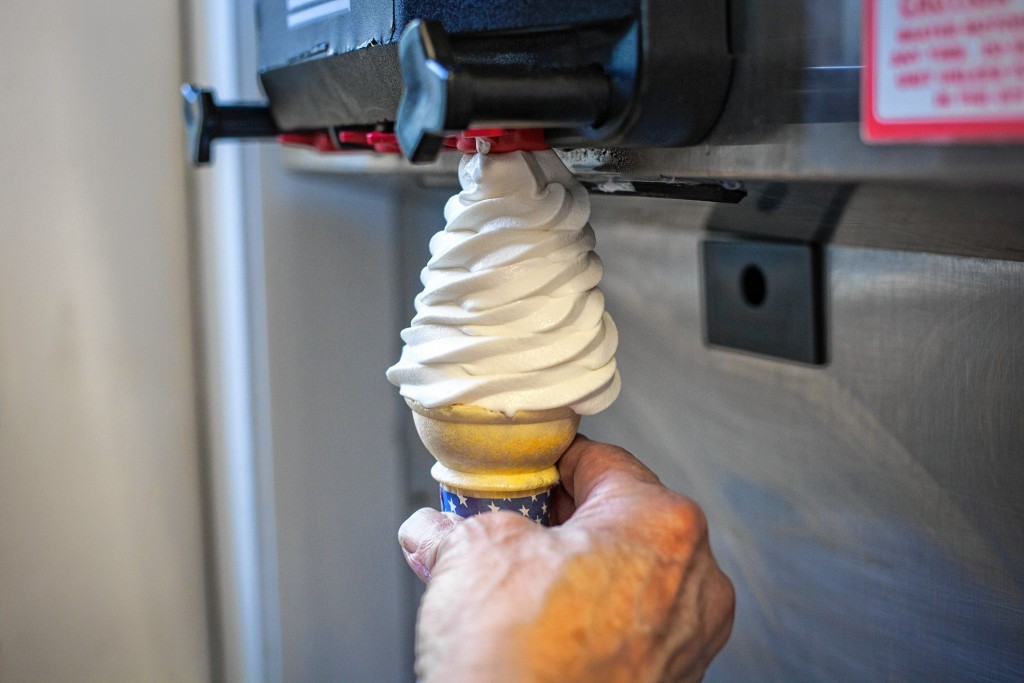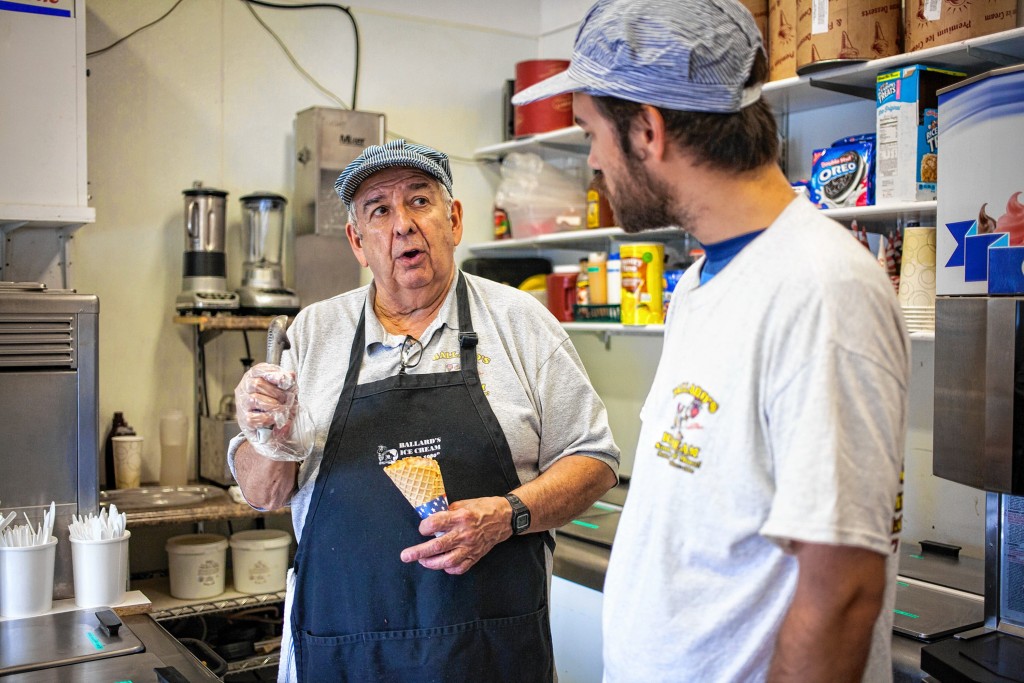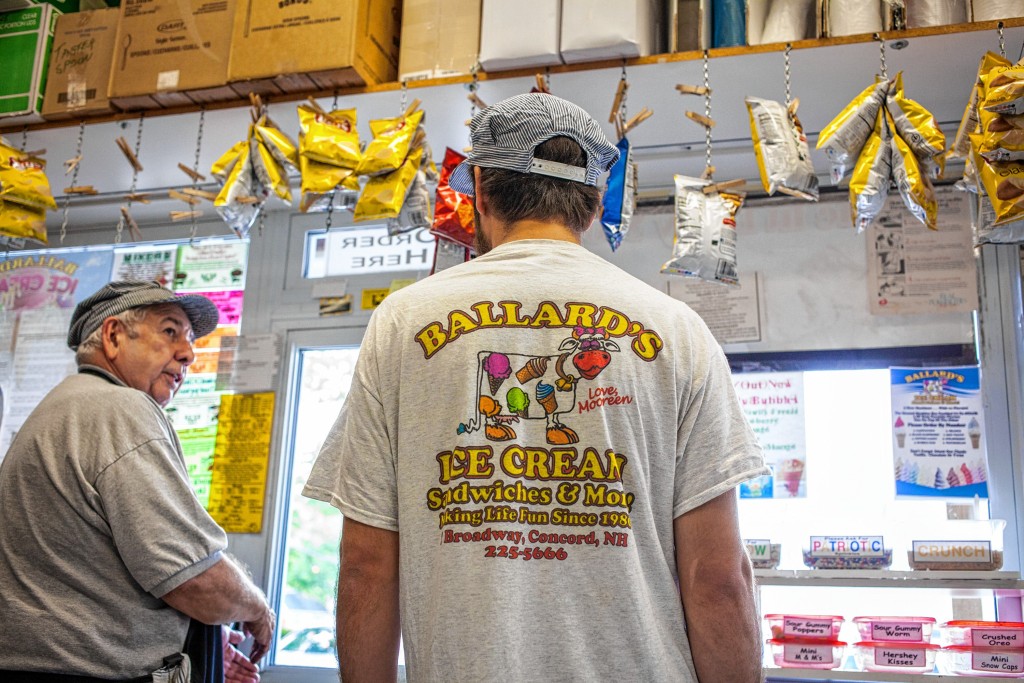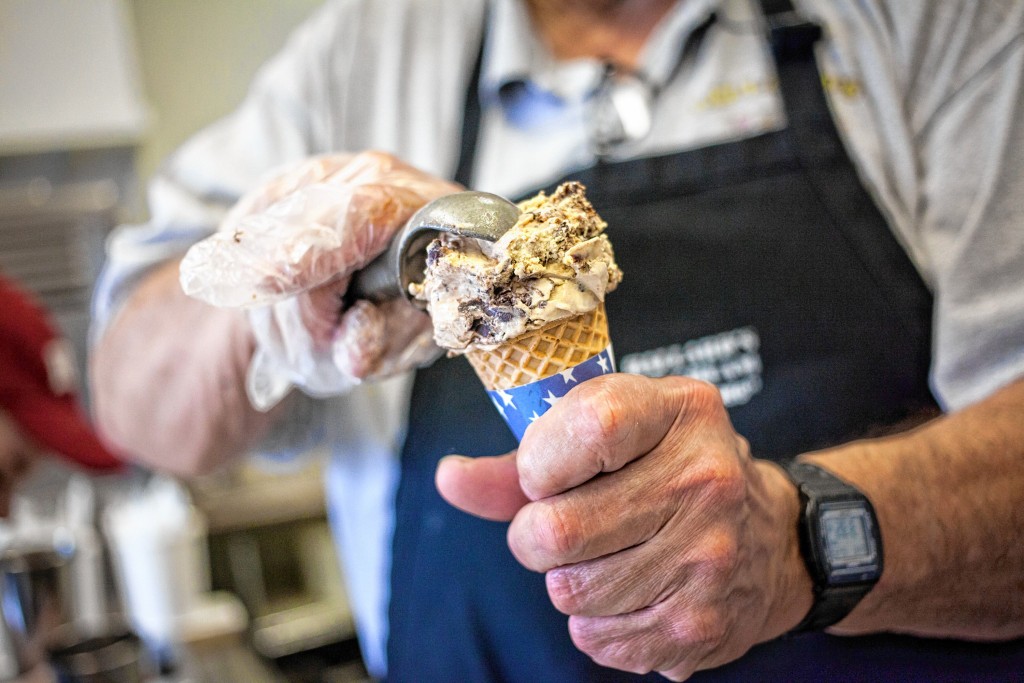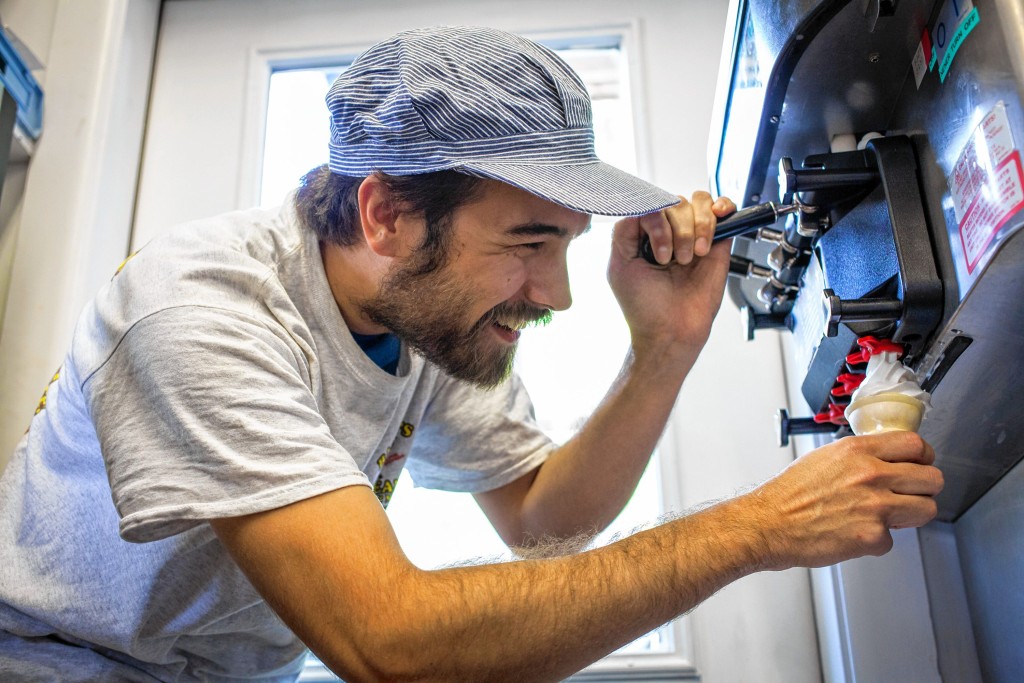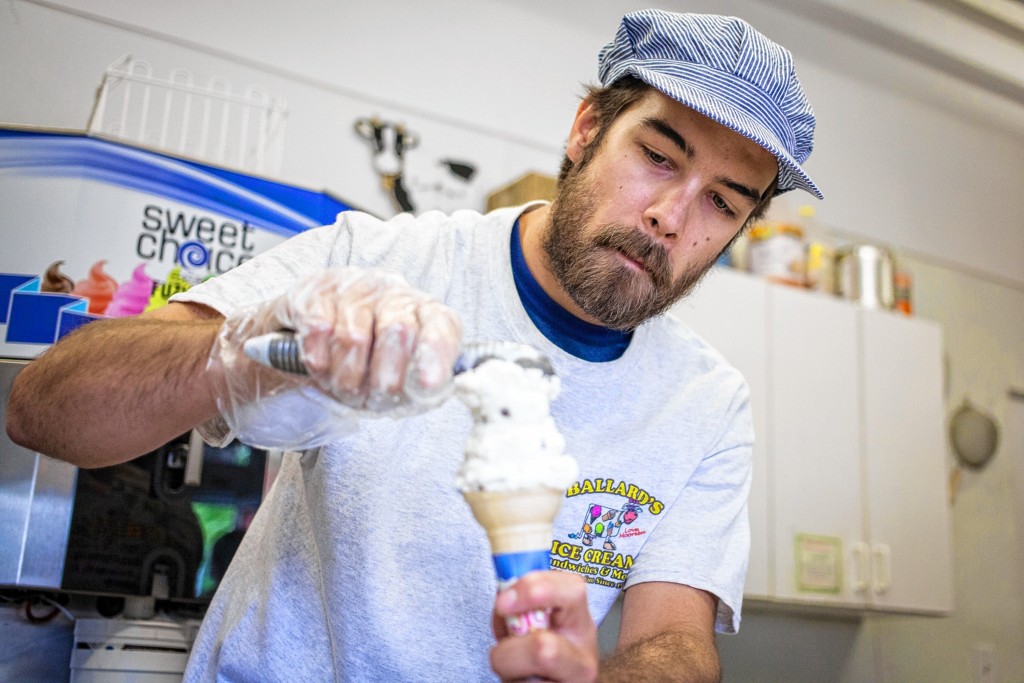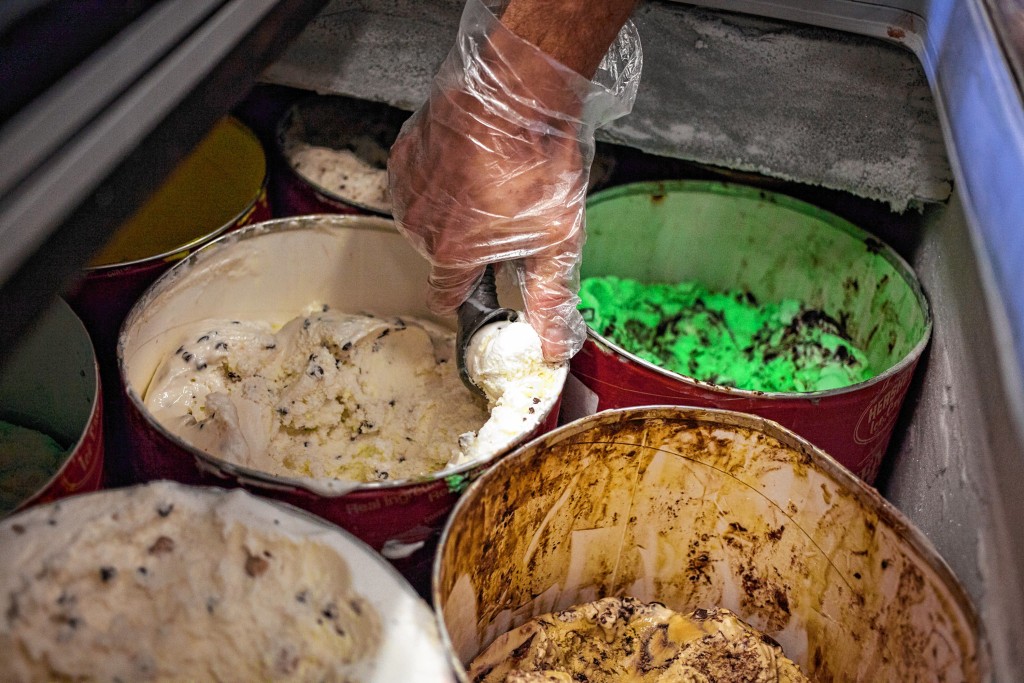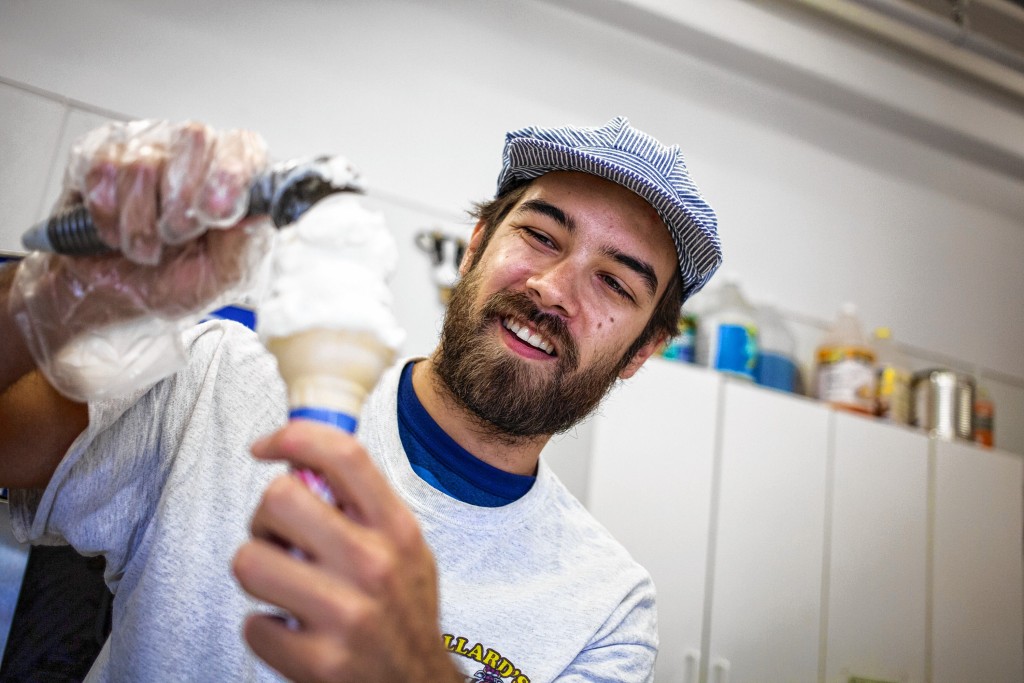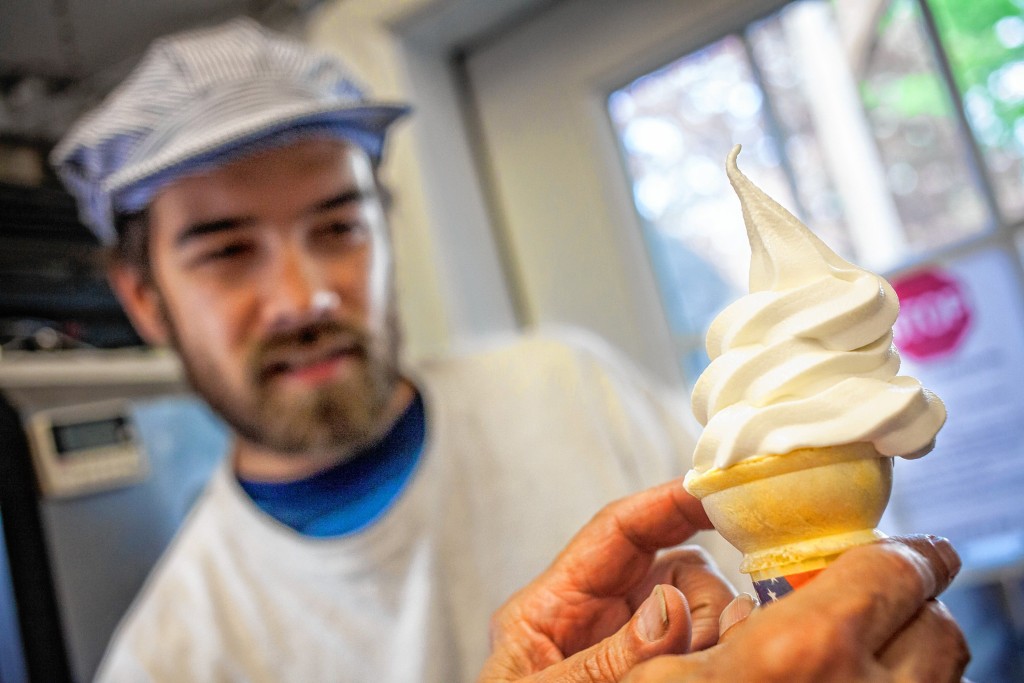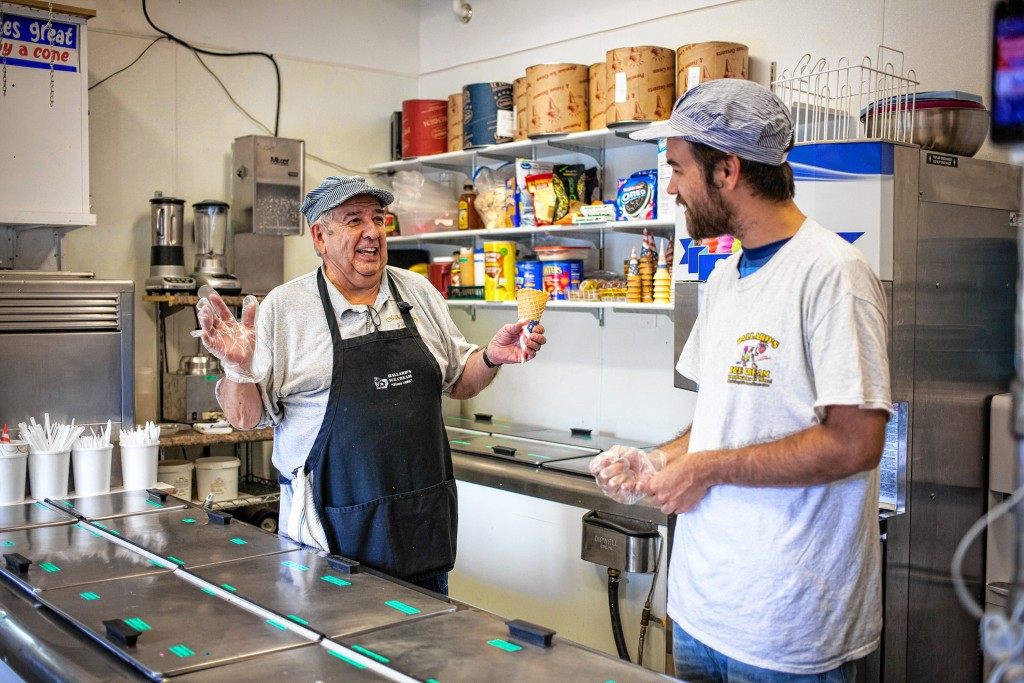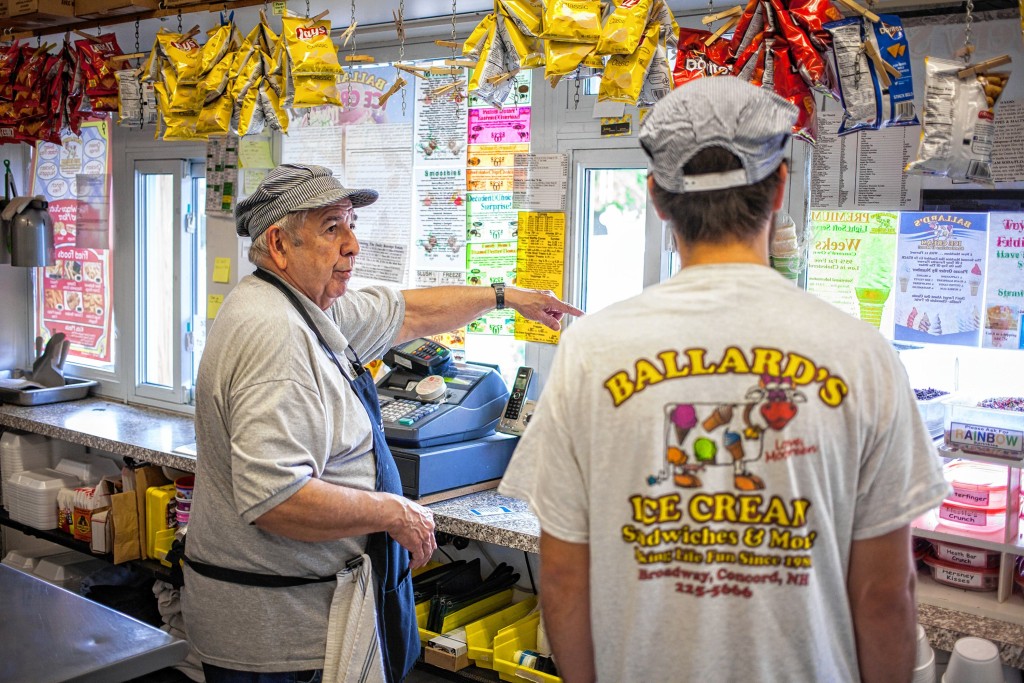There’s no way we could dedicate an entire issue to ice cream and not feature some kind of ice cream-related job.
We did a feature on making ice cream at Arnie’s last year, so we wanted to try something different this time around.
“Why not jump in with some ice cream scoopers?” we said to ourselves.
Next thing you know, I’m putting on a T-shirt and hat at Ballard’s Ice Cream.
The very first thing I learned about working at Ballard’s is you do not want to be late. I thought I had planned my arrival perfectly so that I would get there at exactly 3 p.m., but I had forgotten about the no-left-turn nature of the street that required me to drive a few hundred yards past the ice cream shop so that I could turn around and legally enter the parking lot.
By the time I walked through the door, it was 3:02, and owner Norm Ballard – Mr. B, to you – was very aware of my tardiness.
Once we had officially gotten off on the wrong foot, it was time to get down to the task at hand: scooping ice cream.
There’s a lot to know at Ballard’s before plunging a scoop into a barrel of ice cream.
For instance, you never open the cooler until the second you’re about to scoop ice cream – the longer it’s open, the more ice starts to accumulate inside, which is not a good thing for ice cream. You also need to know how to “baptize” the scoop before digging it into ice cream – we’ll get to that later. And you need to be familiar with all 58 flavors of hard-pack and 13 flavors of soft-serve, so as not to hold up the line while you’re running around trying to find Mint Moose Tracks or Salted Caramel Truffle.
Since I had never done any professional ice cream serving before (though I had extensive experience as an amateur), my view from the cheap seats was that this would be a piece of cake – ice cream cake. After all, how hard can it be to put ice cream in a cone or cup?
Well, as you might imagine, it turns out there’s a lot more to it than that.
My first task was to make a kiddie cone, soft-serve. Pretty basic. Just take a cone, hold it under the soft-serve dispenser and twirl up a nice little cone.
I had some difficulty with this. Okay, I had a lot of difficulty, but that’s what makes these features worth doing.
My first attempt failed because I didn’t get the ice cream to the edge of the cone. “The customer can’t see what’s inside the cone,” Ballard told me. I guess he had a point – this is about presentation as much as it is about taste. Nobody wants a sad, droopy looking ice cream cone.
For attempt two, I made a conscious effort to get the ice cream onto the ridged edge of the cone – the cone is designed so that ice cream grabs the ridges on the edge and ultimately stays put. I managed to get plenty on the rim, but I applied the ice cream too loosely and it wasn’t staying together.
Might as well give it another go.
The third time was not the charm for me, as this time I applied too much downward pressure on the cone, smushing it all up at the bottom.
Attempt four failed because I kept letting my hand ride up over the paper sleeve that protects the cone. Can’t be serving kids ice cream cones that have been touched by my messy Insider hands.
At this point, Mr. B. was starting to get annoyed with all the product I was wasting, so we moved on to the hard-pack ice cream.
This felt like my home turf. I had scooped hard ice cream thousands of times before, compared with my zero experiences of twisting up soft-serve, so this part had to be easier.
As it turns out, I was actually right about something for once.
But, of course, it wouldn’t be quite as simple as reaching into the cooler and making a scoop.
There are two different sized scoops – one for small and kiddie sizes and one for bigger scoops. These sit in a bath of constantly running water.
When you pull the scoop out, you need to “baptize” it – give it a few good, hard shakes, like they do with the holy water at church. Just try not to throw the water all over the employees or the ice cream.
The key, Mr. B. said, is to make sure the scoop is wet enough to be slick, but not so wet that it soaks the ice cream.
Once the correct scoop has been chosen and anointed, it’s time to dig in.
You want to make a nice, round ball – again, presentation is everything. The first scoop needs to be pressed in there so it doesn’t fall out, and I was taught a technique for scoring the scoop – just take the scooper and press the edge across the middle of the scoop.
The ball-making technique was (thankfully) easier for me to grasp than the soft-serve twisting technique. I masterfully scooped around the edge of the barrel with smooth, even pressure, resulting in perfect little ice cream spheres.
Given the damage I did in such a short time, we decided it would be best for me not to try making a big sundae boat. That’s okay though – I learned enough skills at Ballard’s to at least get me through the summer.

